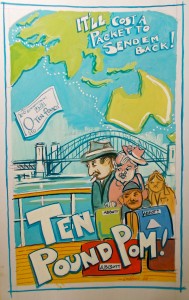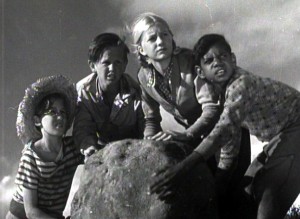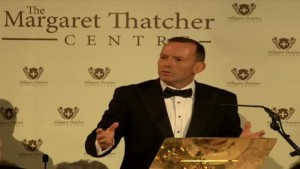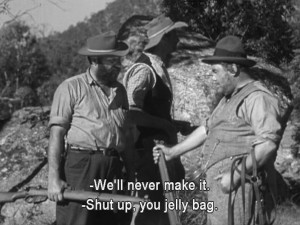 Dear reader, we thought rather than sully ourselves with any description of the latest round between Hillary Status quo and Donald Looney we”d offer another fragment of what once was.
Dear reader, we thought rather than sully ourselves with any description of the latest round between Hillary Status quo and Donald Looney we”d offer another fragment of what once was.
Ten Pound Pom was released in 1949 and became an overnight success. Looking to further enhance the ‘Bring out a Briton’ programme, ‘Ten Pound’ was designed to popularize the benefits of English migration. It was also encouraged by the Federal Government as an ‘educative tool’ to acclimatise the local population to the idea that poms were legitimate migrants and did not suffer the stereotypes that had been attributed to them during the course of the Second and First world wars. Incredibly, the ‘Ten Pound Pom’ game came out at precisely the same time as Palmolive and Lux released their ‘Wash and Wear for Work’ advertising campaign. An advertising campaign designed to instruct recently arrived immigrants from the mother country the benefits of washing more than once a fortnight, and the benefits of washing ones clothes as an accessory. The original concept was developed by the Ministry of Housing, and Department of Noxious Weeds and Rabbit Eradication in the Chifley government.
Keen to offer an incentive for locals to billet out poms and their families. The game offered useful suggestions on how a pom and their family were to be acclimatised. The game itself consisted of a simple foldout board, which displayed a vibrant pastel and ‘off cream’ graphic detailing the typical colour and layout of a post war home. The home had three bedrooms, a garage, a front and rear garden and a shed that could be converted into a sleep-out or a bungalow. There was a rural edition, that consisted of a family homestead of the traditional type, outbuildings and home garden, orchard and machinery shed. Both games were offered free to anyone who offered to bring out a Briton in rural or metropolitan Australia. An enthusiastic response, led by the manufacturer, John Sands and Co saw games and orders reaching the ten thousand mark in the first week. As an added incentive the advertising campaign was launched in theatres and public places by the celebrated Australian actor Chips Rafferty. Photographs of the actor in scenes from a ‘Bush Christmas’, and scenes from the ‘Overlanders’ were included in a deluxe box set, with an additional parcel of vegemite, Bonox, Dencorub and a bar of velvet soap as an introductory offer.

The weedy pom, ( child on left) learns to participate in a favourite Australian Sport. ‘Rock Hugging”
Seeing an opportunity to augment supplies, (due to the persistence of post war rationing) tens of thousands of bogus requests to bring out a Briton meant that the kits were allocated to unusual places. The most unusual examples, being; “The infirmary’, Boggo Road Jail, the Christian Brothers seminary in Northcote, and an unusual request for several parcels to be shipped to the ‘Commissioners Office’ at Port Moresby. Clearly no one had identified these destinations as inappropriate. An enquiry followed. In which it was determined that Church of England parish camps, humpies and “ bits of tarp slung out between two forty-four gallon drums” did not satisfy the standard definition of a conventional home. And applicants whose address, ‘the creek bed’, or ‘the back paddock’ were dismissed out of hand. For several years Ten Pound Pom was a common sight in parlours, ladies lounges and public baths.

A ‘returnee’ ten pound pom, extols the virtue of regular bathing and the use of soap to a sympathetic audience.
The game was simple. Poms were offered a place of lodging and a job for the bread winner. The bread winner, earned points dependent upon the level of expertise required; Abattoir worker, fencer, and toilet cleaner designated for the lowest rungs, and a poorer area allocation, (Frankston, Elizabeth, Parramatta or Blacktown) . Whilst clerical staff, and office menials were given the option of spare room in inner city flats to help them acclimatise. Well educated , and correctly spoken “Ten pounders’ were encouraged to move to inner cites, where their credentials guaranteed them a highly paid executive position within a government department or as announcer in the ABC. Those who could attract the most poms to their house, would accumulate the most points. Those with the highest points were those who were able to convert the maximum space for sponsorship. The rules stated, “any habitable abode”. Consequently chook pens, outhouses and cupboards were made available. The game required skill and a good memory. It consisted of the board, the house plan, and as many pom game counters that you could fit. The only limit being no more than twelve to a room. A starting price of ten pounds was given to each family, with game cards offering employment from the lowly paid and menial to executive level. Those with the most cash converted from the ten pounds would win. It was described by the eminent financier Nugget Coombes as a ‘sort of labor exchange orientated monopoly in which everyone knows by instinct their correct place”.
Sadly the enthusiasm for Ten Pound Pom waned with the arrival of intercontinental aircraft and the lack of interest evinced by the locals once migrants from other source destinations began to arrive en masse. Today only a few examples survive in the foyer of Australia House, and the counter of the Immigration Museum, where it’s used as an instructional tool for Immigration Department officials and members of Border Force. However, recent rumours abound that the game is being re- engineered by scientists seconded from CSIRO to the Property Council as ‘South China C’s’. As described by the head of the Property Council Mr Rennton Seeker: ‘It’s a game from senior cadres of the Communist Party. A bit like Ten Pound Pom in reverse, except, rather than billeting they’re just buying”

